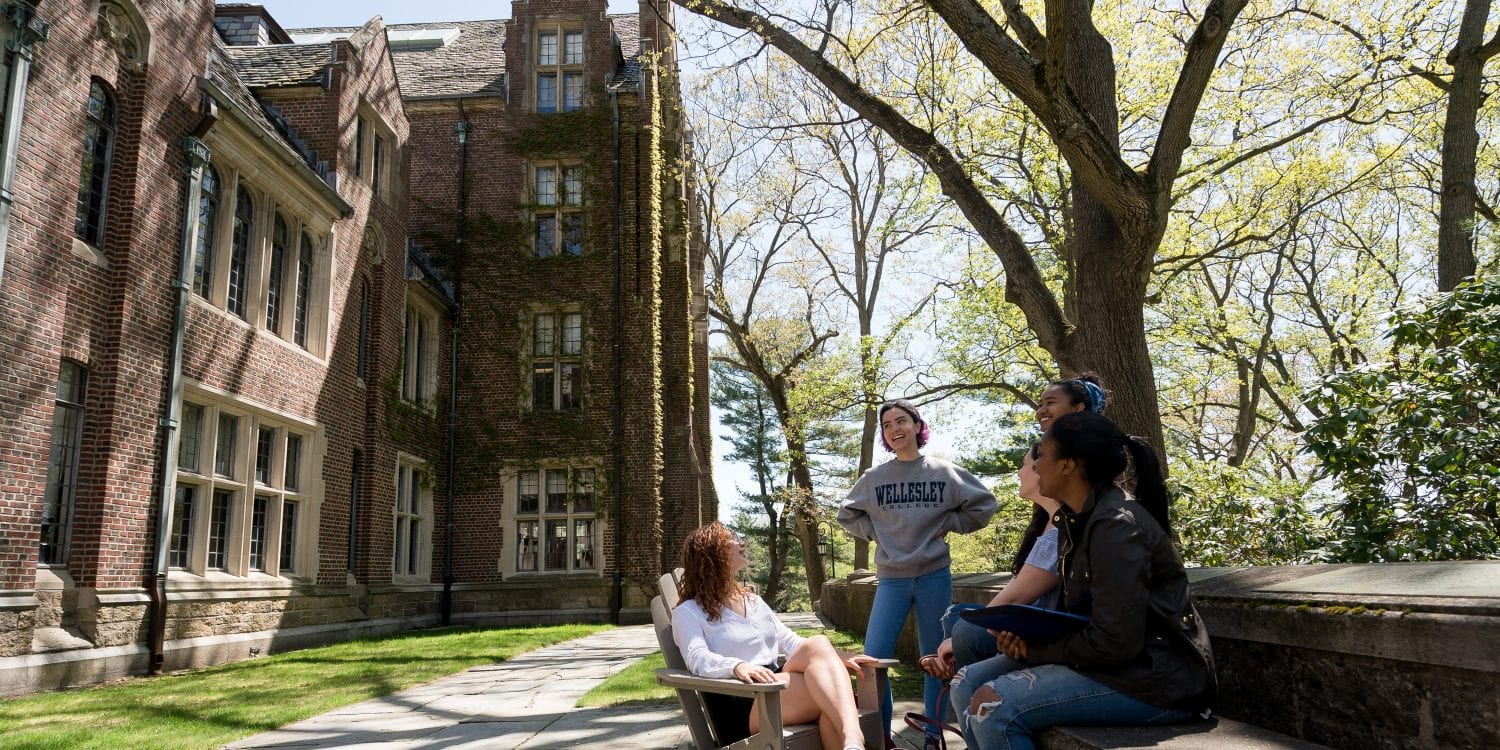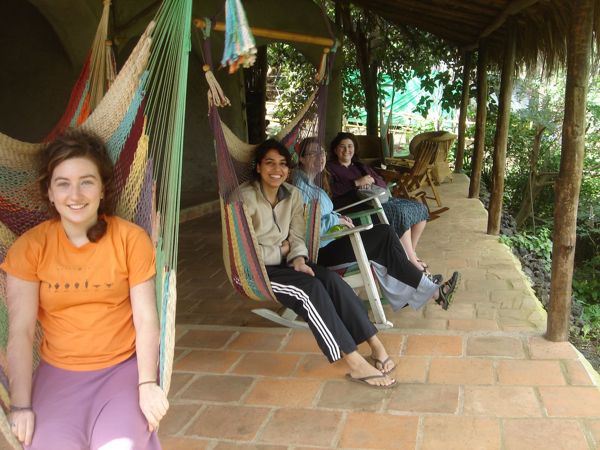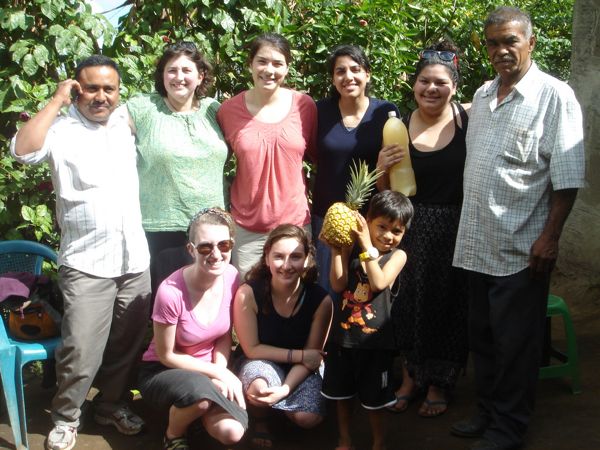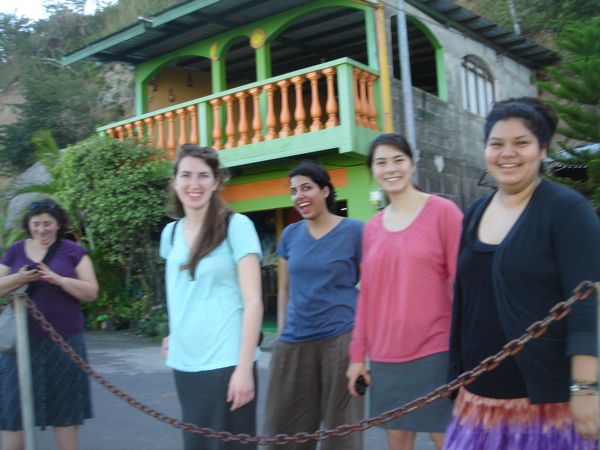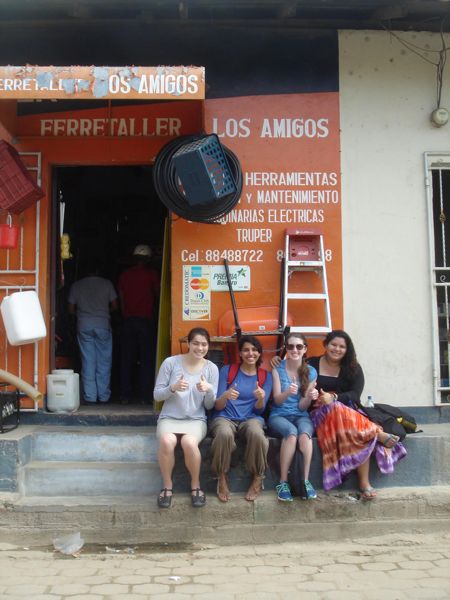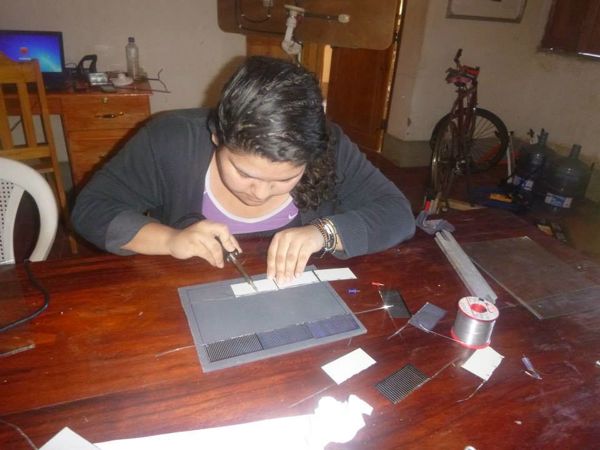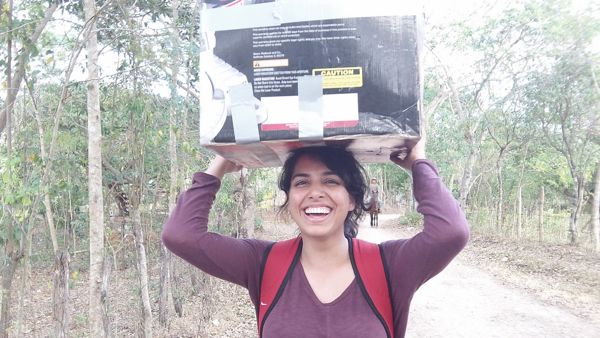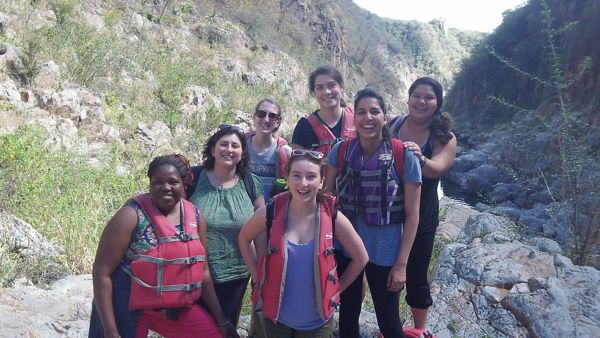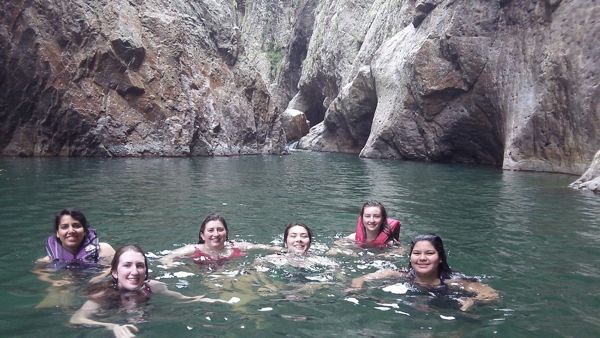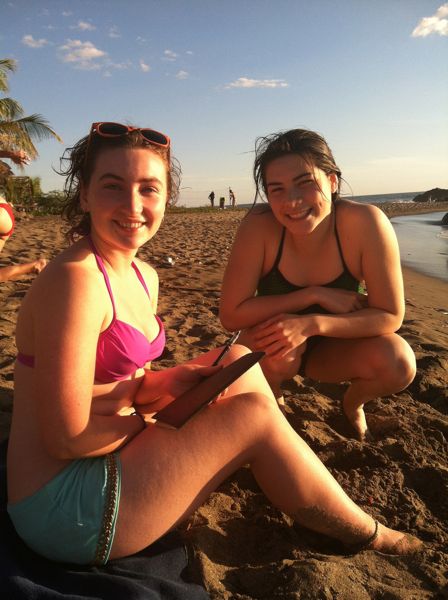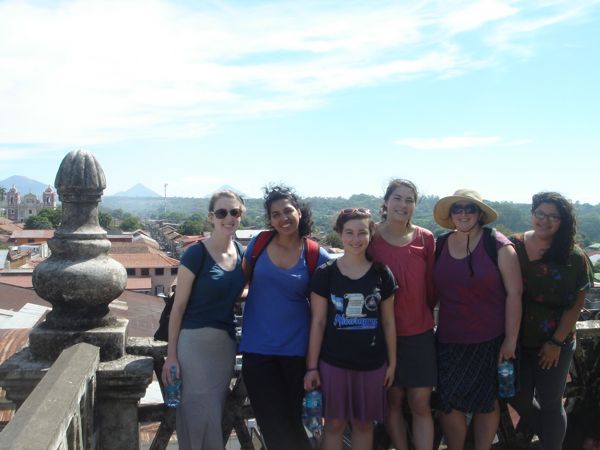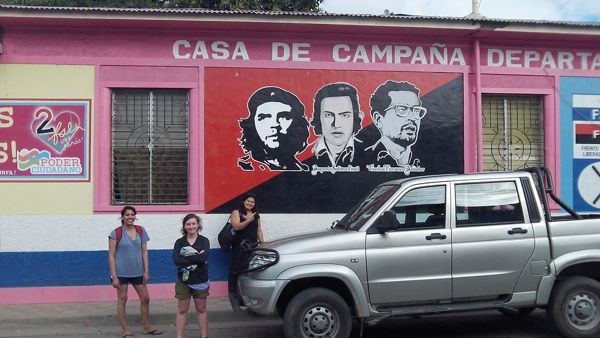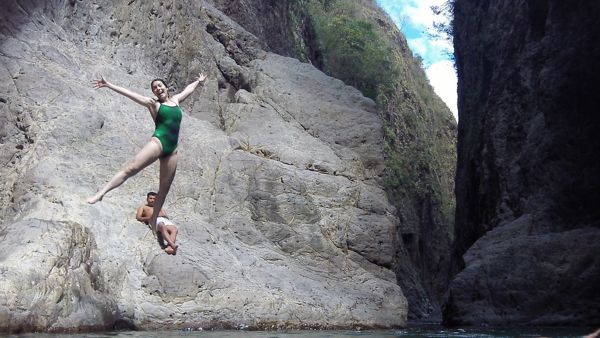Good morning, readers!
Whoa, it’s been a long two weeks. I’ve just returned from Nicaragua, where I was embarking on the Wintersession trip Extd 125. Extd 125 is the fieldwork class based on Extd 120 (Making a Difference through Engineering), a class I took last spring. In Extd 120, students spend the second half of the semester working in groups of three or four to develop small, cheap engineering solutions to problems in a specific community. Many of the projects we worked on were designed around issues in the community of Sabana Grande, Nicaragua.
My group’s project in Extd 120 last spring was not geared as much toward engineering as other projects, as we did a cost-comparison analysis of biodigesters in the community. The Sabana Grande community has two biodigesters already, and they had been thinking of buying a third. My group compared the daily costs of biogas, propane gas (expensive and not much used in the community) and wood (very common) to determine whether it was economically viable for the community to do so. We concluded last spring that biogas is actually the most expensive of all the energy options, despite being clean energy (biodigesters convert manure into cooking gas through anaerobic digestion) and so the community should not buy another biodigester.
This Wintersession (Wellesley, along with many other surrounding schools here, has around a month off between when first semester ends and second semester begins. Wintersession is the last two weeks of this break, and students can take a limited range of courses, go abroad on different programs, work in the Albright Institute, return to practice winter sports, etc.) I spent one of the two weeks in Nicaragua in Sabana Grande. I wanted to share my group’s conclusions about biodigesters in their community, and also gather more information that I could add to my incomplete estimates from the spring. Then I could also present an updated form of my conclusions.
Five other Wellesley women (Chloe, Fiona, Luisa, and Zehra), along with my professor Amy Banzaert, traveled to Nicaragua on this trip. We presented three different projects to the community of Sabana Grande: the biodigester project I just discussed, and also Luz en Litro and the Bici-Licuidora. The Luz en Litro project is based off of the innovation that you can put a filled water bottle in the roof of a house, and the interior of the house will subsequently be much brighter due to the water’s diffusion of the light. Wellesley students designed a different version of the water bottle that acts as a lamp at night, using an LED. The Bici-Licuidora project is also known as the “bike blender” in English, because a group of young people in Sabana Grande blend smoothies for people at games and events in order to earn some money. This is an engineering-heavy project, as a blender is attached to the back of a bike (lifted off the ground with a bike stand), and the user should be able to blend fruits just by stationary pedaling.
Whew, I think that’s all the introduction you’ll need :). Now we can get into the good stuff—what we did, what we learned, and pictures, of course, can’t forget the pictures!
Let me start out by saying that this was probably my best-ever trip abroad. I have a tendency to go abroad without my family about every three years, not that I’ve ever deliberately planned it that way. To this end, I was asked one of the best “introduce yourself” questions I’ve ever heard by a community leader in Nicaragua, Susan. She said: “tell me your name, your major, and why you are here.”
My name is Monica, I’m a neuroscience major (that was a fun one—I kept on saying I studied “sciencia del cerveza” rather than “sciencia del cerebro,” which means I told everyone I was fascinated by beer science), and I was in Nicaragua because I fear becoming narrow-minded. Life at Wellesley College is pretty much like living in a bubble, unless you try really hard to step out and see how other people live. Moreover, science grad school, academia in general, and thus where I anticipate being in the future, are all pretty darn bubble-y. I believe that travel makes you more open-minded and respectful of all people, mostly because of who you meet, but also because of the people you travel with. When I’m in school, I forget that a world exists outside my own opinions and biases. I seize opportunities for travel, especially home stays, in the hopes of remembering.
This trip was not just about remembering; it was just straight learning. We had so many experiences, of all different natures—we engineered solar panels, presented our coursework with much more improvisation than usual, took Spanish lessons, learned about the US’s (unfortunate) role in the history of Nicaragua, got along with our fellow travelers, visited a geothermal plant, hung out with our host families, used latrines and carried water back from the wells, released baby turtles in the ocean in sunset, and listened, enraptured, to Prof. Banzaert’s comments on how what were seeing fit into the country’s context, the international world, and the community. There were parts of the trip that were like a vacation, there were parts of the trip that were like school, and most of it was not like anything I’d done before. As Prof. Banzaert said, we’re like kindergarteners again. We don’t need books; we can just plop ourselves down in the environment, and we’ll absorb.
Let me give you an overall structure of the trip before going further. We arrived in the capital city of Nicaragua, Managua, on Jan. 9th, and quickly took a bus to Masaya in the north. There we stayed for three days at La Mariposa, a Spanish school with a stunning location of the region’s valleys and volcanoes. We studied Spanish in the morning (Fiona and Zehra had zero Spanish, Chloe and I had “bastante,” or enough, and Luisa was our best speaker) and in the afternoon, took trips out to smaller communities in the area. One day, we visited local artisans in Masaya: a family that made ceramics, a beautiful furniture maker, and a stone cutter. Another day, we had a history lesson on Nicaragua (and it is an engaging and important history that we do not learn about in US textbooks). That night, we went out for ice cream in the nearby town with an employee our age at La Mariposa. And the last day of our visit we visited a pineapple farmer, who told us, smiling, that “it is fine that the birds eat some pineapples. We all have the right to eat them—the animals, the birds, the insects, and us too.”
The next week we spent in Sabana Grande, which is a village near Ocotal. We arrived by bus in the evening, when we met our host families and settled in. The next day we were given introductions to the Solar Women of Totogalpa (an amazing collective of women who run a restaurant solely run on solar energy, sell solar cookers, and embark on many renewable energy projects), the Jóvenes Pedaleando Hasta el Futuro (a youth group that uses the bici-licuidora, and runs other community-based projects) and Grupo Fenix (a nonprofit that had worked for many years with this community to help organize the Women and Jóvenes). After that, it was our turn to participate in the cultural exchange, and on Tuesday we took the bus to Ocotal to gather our many materials before heading back to Sabana Grande to prepare our biodigester, Luz en Litro, and Bici-Licuidora presentations.
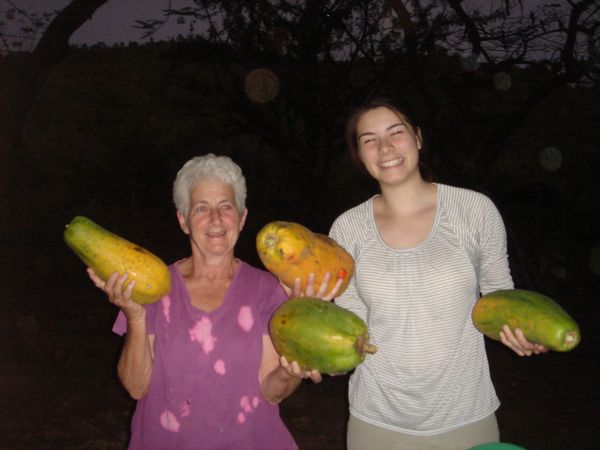
Taking a break from prepping– me and Susan from Grupo Fenix fetching papayas from her trees (I was very tall in the community ;P)
I’ve never prepared less for a presentation than this one, but it was astounding how well it went. The afternoon before, we had run out of time, because when the sun sets at 5:30pm work in the community stops. We pressed on, huddled in one of the houses using a single bulb run on solar energy and also equipped with flashlights, writing pages out by hand and doing translation with a pocket Spanish dictionary. Sabana Grande is a relatively better-off community than many others because of the work on renewable energy that Grupo Fénix and the Women have done. For example, many of the houses have electricity at night, due to the construction and installation of solar panels and some use of inconsistent grid energy. This doesn’t mean, however, that there is running water, toilets, electronics besides cell phones, or internet. Making a presentation without Powerpoint was an experience for me, but only one of many :).
In the morning when I gave my presentation to four members of the community, Chloe and I (Chloe was recording everyone’s responses and my questions—I’m so thankful to her) used up the whole hour and a half we were allotted. I just kept on asking questions to clarify my estimations, and sometimes Prof. Banzaert suggested a question, and sometimes one of the community members left the room to answer a cell phone while the other three discussed among themselves, and a lot of the time Lyndsey (who works at Sabana Grande for Grupo Fénix) would ask follow-up questions after difficult translations. I was sitting there, listening to all these people talking amongst themselves, with me, and with Lyndsey, trying to figure out my next questions in Spanish, and it occurred to me that this is the sort of thing I saw in pictures. Extrajera (foreigner) sitting across the table from community members, presumably talking, but static in the photo. Except this was me, and this was actually happening, with real people and a real topic and Spanish and conversation. Mini-revelations abound.
Luisa and Fiona presented the Luz en Litro to the Jóvenes (who not only were there to give input about our engineered solutions and suggest possible new projects, but also got a free lunch at the Solar Restaurant for their participation ;P), who enjoyed the presentation and thought they might make one of the night lights themselves. Zehra and Chloe then presented the improved Bici-Licuidora and bike stand to them, and we had a grand time pedaling it and trying to blend watermelon. It didn’t work (Prof. Banzaert says that’s what to be expected—if it works in the States, that doesn’t mean it’ll have survived the airplane intact in order to work here) but hopefully they’ll take some of ideas of the model and apply it to their own bicycle blender. We also brought them a bike stand from Tanzania that one of Prof. Banzaert’s old students, Jodie Wu, had developed when she was a student at M.I.T. Prof. Banzaert tells us that she doesn’t know what ideas members of the community will actually adopt and build for themselves, but that in future years other students will come back, and they will see.
The main purpose of our trip over, we all breathed a huge sigh of relief before heading into Thursday and Friday, which was focused on solar panels. On Thursday, Jorge (a community member and the main technician for the community) taught us to build small solar panels—mine has survived the trip to the States and I’m looking forward to charging my phone with it. On Friday, we took a massive solar panel that Jorge had built (because this one actually needed to work) and set it up in Doña Maria Antonio’s house. It was an amazing experience—we mixed the cement, hauled rocks to stabilize the solar panel pole, drilled the main switch to the wall, stripped wires, did the circuitry, and connected all of the light bulbs—and lo and behold, when we flipped the switches in each of the rooms, the solar-powered light bulbs worked! It was so remarkable to spend all morning and afternoon installing a solar panel, and then to see it was actually going to have an impact on this family’s home for the next five years or so. We all felt so inspired and accomplished.
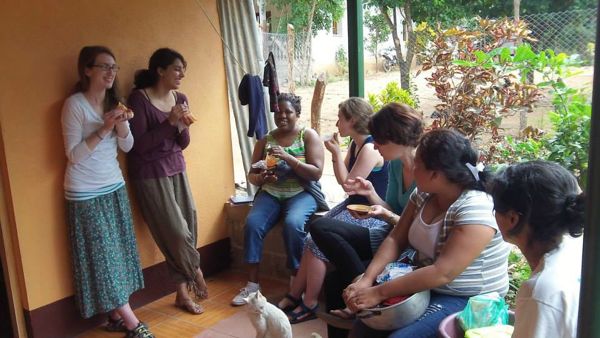
Taking a snack break during the solar panel installation at Dona Maria Antonio’s: Chloe, Zehra, Juliet (another visitor), Fiona, Lyndsey, Glenda (a solar woman) and Adelina (a solar woman and my host mom!)

After our sucessful solar panel installation: Jorge, Prof. Banzaert, Fiona, Zehra, me, Juliet (also visiting), Chloe, Luisa, Carlos, Dona Maria Antonio (and her grandchildren)
On Saturday we left Sabana Grande—traveling by way of the back of a truck! So much fun– to head over to a tourist visit to Somoto Canyon. This was one of my favorite days of the trip, because it involved a lot of swimming with friends in a beautiful location :). I have a waterproof camera too (which I’m not allowed to put under the water for fear I’ll break it, but was quite happy to cart about above the water) so I have many pictures of the day.
Sunday we left Sabana Grande to head to León, a major city in Nicaragua and the start of the revolution. We spent the next few days wandering around, touring the city, releasing turtles into the ocean, playing the ocean ourselves, whisking through their open-air markets, eating dinner at Prof. Banzaert’s friend’s house, and living a completely different way of Nicaraguan life. The difference between the locals of Sabana Grande and of León were astounding. This was especially apparent when we went and visited a geothermal plant near León, which was opposite to our work in Sabana Grande in many ways. (Note that we came back to Boston after a final day in León, and this finishes my trip summary :).)
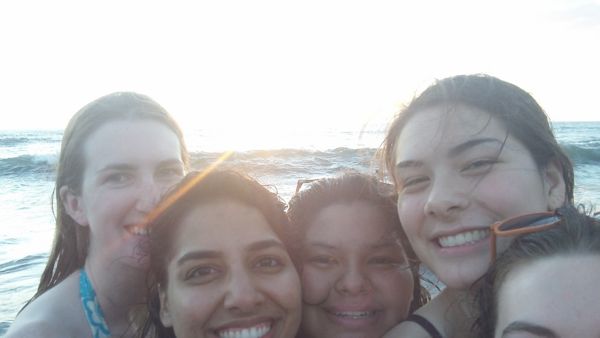
At the beach in León: Chloe, Zehra, Luisa, me, Fiona. As you can tell, we have a bit of work to do in figuring out how to take succesful selfies 🙂
In Sabana Grande, the locals lived lifestyles very different from ours. I would get up almost with the sun (let me warn you about the roosters though. We think they crow only at dawn. They don’t. They start up at like 4 in the morning and don’t stop until around 10 am. They also fly and occasionally put themselves up on eye-level poles before cawing. If they were male humans, I’d totally rag on them for being so patriarchally aggravating, but as they are roosters, I am left wanting. Alas.), run for the latrine in the back, and put on one of my two shirts, and one of my two skirts. (This meant I had four combinations of clothing, which I rotated through. Luisa told me that her first impression of me was in one of these combinations, and then the next fourteen impressions of me were also in one of these combinations, so I’ve rather no hope for her imagining me in anything else. On the other hand, it turns out that wearing something over and over again and not seeing yourself in the mirror is actually good for developing a liking for those clothes. I recommend it.)
Then I’d walk down the road to the Solar Restaurant, to do whatever was planned for the day. At five pm, no exceptions, we’d finish up our work and walk back to our respective houses before it became too dark to see. At home, I’d sit and watch some of the animals if it was light enough—my house had two dogs, two cats, two pigs, one rooster, and eleven chickens by my count—and when it became dark, I’d sit on the porch and watch my family talk while we ate dinner. Then we’d head into the house to watch two hours of TV on grid electricity (we also had solar power), and my host family thought it incredibly amusing how by the end I knew all of the characters in the telenovela’s (soap opera) names. I’d sit in the rocking chair next to Alexandra, my 13-year-old host sister, and whisper to her by turns: “están besándose” (they are kissing each other), “están matándose” (they are killing each other), and “están hablando” (they are talking.) Alexandra repeated called me “loca”, or crazy, but those are really all the essentials in telenovelas :). Then I’d take a bucket shower if I felt up to it (cold water. Cold cold cold and not a lot of it) and head off to bed.
It’s a calmer life, composed of cooking and fetching water and cleaning. And sitting on chairs on the patio, looking out. My 20-year-old host sister was eight months pregnant, and often made me breakfast and occasionally dinner. We’d sit slightly awkwardly, because while I have great classroom Spanish, I can’t express anything as difficult as “I tried to say that someone told me blank, but I didn’t because I forgot,” and all the other sentences that one uses to express one’s life, and makes one an interesting conversational partner. Prof. Banzaert and Chloe and I were talking at La Mariposa, and we all agreed that speaking in a second or third language makes one appear much stupider. I felt like a grown child—I could do a lot with facial expressions, and was polite as was appropriate for an adult, but I was fed by a woman my age and my Spanish was approximately a six-year-olds. I wanted to go back to the States and tell my host family—no, really, at home I’m not actually useless. At the same time I wanted to just sit there and watch, because I’ve always kind of irrationally suspected that if I stopped working and thinking and just paused my life and sat on a patio, everything would come crashing down. But it doesn’t. My host family was content, led full and complete lives. Talked with their friends and did their work and enjoyed it, just as I enjoyed mine. I told Prof. Banzaert I didn’t think I could take that attitude back to the States, of course, and she said that while it was different in Wellesley’s environment, you could take some of it back with you. I did so last night, when I was laying in bed and not aggressively planning what I had to do the next day. Just kind of sit and drift, and sleep.
I loved being with the four other girls who came on the trip. Prof. Banzaert and others commented we were a particularly cohesive group, and we really did enjoy each others’ company in a way no one expected. We are an Economics and Women and Gender Studies major (Luisa), a Peace and Justice major and Psychology minor (Zehra, pronounced “Sarah” but with a z), a Literature major (Chloe), a Music major (Fiona), a Neuroscience major (me), and a Mechanical Engineering major (Prof. Banzaert). We would never have met each other at Wellesley. And yet there are things that I deeply respect about all of these people, whether I learned about their life sitting next to them on a bus for two hours, talking into the darkness while we all laid in bunk beds, hearing them talk about their goals and motivations with others, or just watching them work and travel. I learned so much more about myself, too, as my traits were pointed out to me. The oddest thing is, I don’t think we’ll overlap much at Wellesley. We’re great at getting along, an excellent team, but what happened in Nicaragua stays in Nicaragua. As Zehra said yesterday, we have an alternate reality to get back to, unlike the people in Sabana Grande. A parallel universe, fantastical and utterly strange.
I meant to point out originally the difference between Sabana Grande and the geothermal plant. Coming into León we appreciated things we didn’t look for before—“look at those tiles (as opposed to a cement or dirt floor)—aren’t they lovely!”, “ooh, we have a shower! Running water, score!”, “look how much space we have!”, “no fleas, and look, a washing machine!”. Expectations morph so rapidly, and I know I won’t appreciate the showers and toilets for long when I’m back here at Wellesley. It’s something to be appreciated, though.
The Nicaraguans working at the geothermal plant spoke almost perfect English. They trotted out statistics on their Powerpoints, graciously showed us around the gigantic machinery, told us they were educated in Costa Rica or the United States. They had a sprinkler outside ticking around a lawn. Tick tick tick tick burrrrrr. They told us that the local community just wouldn’t accept their help—the company had built them a basketball court, a baseball field to deter crime, and was installing a water system that would change the local peopels’ lives. But instead of digging their own ditches for the water piping, the only thing the company mandated the local people do to get more than one hour of water every forty-eight hours, the local people demanded that the company just give them things. The company man describing this to us groaned in frustration. “We tell them to sell quesadillas to the tourists here—60 km away, all the local people do it, and those people are lifting themselves out of poverty. But these people? They just refuse. They come up to us and demand, ‘what will you give us?’ These things the company is giving them, this is not for us—we might be gone in a few years! This is for them, for their children. We keep on trying, but they don’t help themselves!”
“Why is he so frustrated?” Fiona asked Prof. Banzaert at lunch. Why wouldn’t he be frustrated? A man who’s pulled himself up by his own bootstraps, doing all he can to improve this community, and the community men just sit there. With their wives walking 5 km every forty-eight hours to haul enough water back home to hold them over. Tick tick tick tick burrrrrr.
…
Luisa likes murals. She likes to look at them, point out anti-American sentiment and other themes, enjoys all the details and colors and the fact such intricacies are painted right there on the wall. I walked past the first one, walked past the second, but by the third time I was asked to stop and take a picture for her, I was on the search for them as well as open-air marketplaces and sizzling foods. Luisa asks local businessmen the details of their businesses, asks probing questions of guides about Nicaraguan history, has so many intelligent conversations about economic and social discrepancies with Prof. Banzaert. I try to walk in front of them now, silently listening in; I once moved very unsubtly up a few seats in the van to hear them talk. “Luisa, mural!” we cry out to her now. I had never before thought about noticing.
…
We’re in a prison, masquerading as the Museum of Myths and Legends, walls two feet thick and high above us, forms of torture carefully inked on the walls. The Samoza dictatorship cruelly ruled Nicaragua from the 1930s to 1970s—the US supported them until the Samoza reign forgot they weren’t supposed to kill American journalists—and this prison is one of theirs. Like a few other places we’ve visited in Nicaragua, the people here don’t destroy their past, just change it for the better. Thus, in each of the rooms we enter, along with the grey stencils of bunk beds and prisoners painted on all four sides of the room, there are gigantic puppets filling the space, representing various ancient myths and legends. Our guide talks us through them, and afterwards we sit outside, closed in, staring at the beautiful trees that now rim the inside perimeter of the space.
“Look, we can go up on top of the walls!” one of us says, and I see that along one wall is a black iron staircase the width of my body. “Sure were skinny guards,” I mutter as we climb up 20 feet to the top edge, railings bordering the walls’ edge if anyone loses their balance on 2-feet-thick cement. I make it along one edge of the large cement square before I inform my friends I’m turning around. I descend the stairs as quickly as possible, clanging down them before I’m on safe ground again. I’m sitting on a bench, looking up at them paroling the perimeter far higher than I could ever hope to escape from without the stairwell, and too far to jump from if I ever made it that far. I’m thinking that people are being tortured right now, and I don’t know where they are. I’m thinking, unhappily, that I don’t want to know.
…
Chloe, Zehra, Luisa, Fiona and I are sitting on our five beds at our hostel in León. We’re actually a lot more sprawled than sitting, and one of us is in the shower, rotating every 15 minutes or so. We’ve all exclaimed over our shower and the fact that we have a toilet that flushes, something we never would have thought to do before Sabana Grande. I’m sure we’ll forget again, but for now we have soap and a clean room and a deck of cards Fiona brought.
In Nicaragua, I’m treated differently by my group than I am by my friends in the States. I come with less baggage—I don’t have to be the logical one, the social-norms obsessed one, maximum efficiency, devoted to school. Not that I knew I even played these roles at home, but these people are meeting me from ground zero, and they tell me who I am. “I love how you approach everything confidently;” “As you said yourself, you can have a tendency to run people over when you’re leading, but I haven’t seen that too much of that on this trip;” “You’re happy all the time.” (“Happy?” I asked. “Does it come across that way?” We worked it out: I didn’t come across as happy, necessarily, but more with a steadfast refusal to be brought down by anything. “Looking away from things I don’t like is great for personal mood regulation,” I commented wryly, “but not so good for changing things.”) More: “You’re a very friendly person—I like how you make up lists of questions for us;” “Oh, you like when things go your way—I can see how annoyed you get with the little things. I’ve seen worse;” “How many miles per hour is 60 km per hour? Yeah, that was a Monica question anyway…”
I fit many of my usual roles. I still love open-air marketplaces, talking about social customs, thinking critically, playing with numbers in my head. My opinions on everything are pretty much the same. But I feel like at home I’ve grown so used to the traits that I exhibit that I’ve become stereotyped, pressed to respond a certain way even when situations change. Why can’t I be excited and not analytical when Tiffany reveals her life goals? Why can’t I just sit down with friends and listen, trying to figure out the differences in how they think, without feeling pressure to jump in? Why can’t I just wait quietly, watching the sun set, instead of listening to my mind whirl a mile a minute? Who’s stopping me, me? I love defining myself, but I’m not defined yet.
…
Prof. Banzaert is an amazing, amazing woman. Fiona said she was our Google, but she is so much better than that. She knows an immense amount of information, true, but it’s carefully organized, marshaled to describe every situation, and then kept hidden until someone asks. And when we ask, beauty spills out, describing how this community has changed and has developed and who can help whom and how, and if you ask questions, her experience and intense engagement craft ideas she could fill rows of theses with. Her goal to combine engineering with humanitarian work is novel in both fields, and she cares so deeply about it and works so hard it’s incredible to realize she even exists. But she doesn’t come across as an untouchable figure. She’s real, she laughs with us, keeps all the diamonds in her head until we ask to see their sparkle. She studies everyone (including those she doesn’t like), she absorbs details, she remembers so much. She cares about us, and shows it. Her drive to improve is tremendous. And she’s a teacher, a natural one, letting us fall, speak, lead, teaching us through words and actions so much more than we thought we could know.
…
It’s weird talking to my friends here again; a jolt to realize they’re mostly the same. “I think you’d like this, Monica,” one of them says, and I don’t know what to make of it—if anyone in my Nicaraguan group had said so, I’d believe it absolutely. My Nicaraguan group—Chloe, Zehra, Fiona, Luisa—base their sense of me on my actions that they watched for eight hours a day for two weeks. But then again, my Nicaraguan group probably wouldn’t venture such comments, wouldn’t feel ownership of me enough to do so.
My best friend Tiffany’s different in that I’m seeing her separate, watching her interact from afar even while speaking with her. Is that how she’s always been? Why didn’t I acknowledge how much she gives, how good of a conversationalist she is, how much she remembers about people? And I remember that I have always valued these things, that I have pointed them out to her. Just, it feels like all of her best points are different now, like they’re just as great but it’s a novelty. Something I get to experience for the first time again.
My parents talked to me for a few minutes last night, and in that time they announced that I was more mature, more adult. I kind of thought I was already an adult; I’ve certainly been treating my thoughts with the gravity that I was one. I think that who I was before this trip was a formed adult, and now I’m a slightly differently formed adult, but still with the same maturity. But I’m splitting bricks—we’re both getting at the same thing. I’m just slightly horrified to imagine what wouldn’t have happened if I hadn’t applied for and gone on this trip. I never would have known.
Did you know that I wouldn’t implode if I didn’t exercise every day? Didn’t eat any vegetables? Not have internet and not want it. Be incontactable outside of our group of six. I’m calm when I sit outside in the mornings. I’m capable of observation, listening, sitting still. I don’t need mirrors (I’m covering mine up), I liked our well-kept latrines, I can turn silliness on and off, I can communicate what I need in Spanish. I’m capable of appreciating many things, and working well in a group.
I feel changed from a two-week trip. An extremely well-run trip, with an amazing leader and four other amazing girls. I was showering yesterday, worrying about what I was going to write today, when I realized there was no reason to try so hard. I would get up in the morning and write what I needed to. There is so much to say.
Monica
—————————————————————————————————-
This blog was written in two days, Friday and Saturday morning, and I can actually tell, reading it over, when I stopped to go interact with people and reflect a bit more, and when I started writing again :). Kudos for making it to the end, readers—this one’s truly massive :).
I’ve included several pictures here, but we have a much more complete album on the Wellesley Engineers flickr account, which my group has spent an enormous amount of time superbly sorting. It’s here—when you get there, immediately click on “Sets” and navigate from there.
And because it’s a question I meant to address this but never got to, here is a list of food we had: gallo pinto (beans and rice), fruit juice, fruit (it is amazing there, with papayas as long as my forearm), maduros (sweet plantains), tortas (corn-based), tostones (plantain-based), enchiladas (homemade by my host mom!), batidos (fruit smoothies and AMAZING), miscellaneous sweet things I made people pick up, cooked vegetables, and more :).
Comments and questions are welcome as always, and if you want to read any of the official documentation of the trip, feel free to contact Prof. Amy Banzaert! (You can find her information online.)
